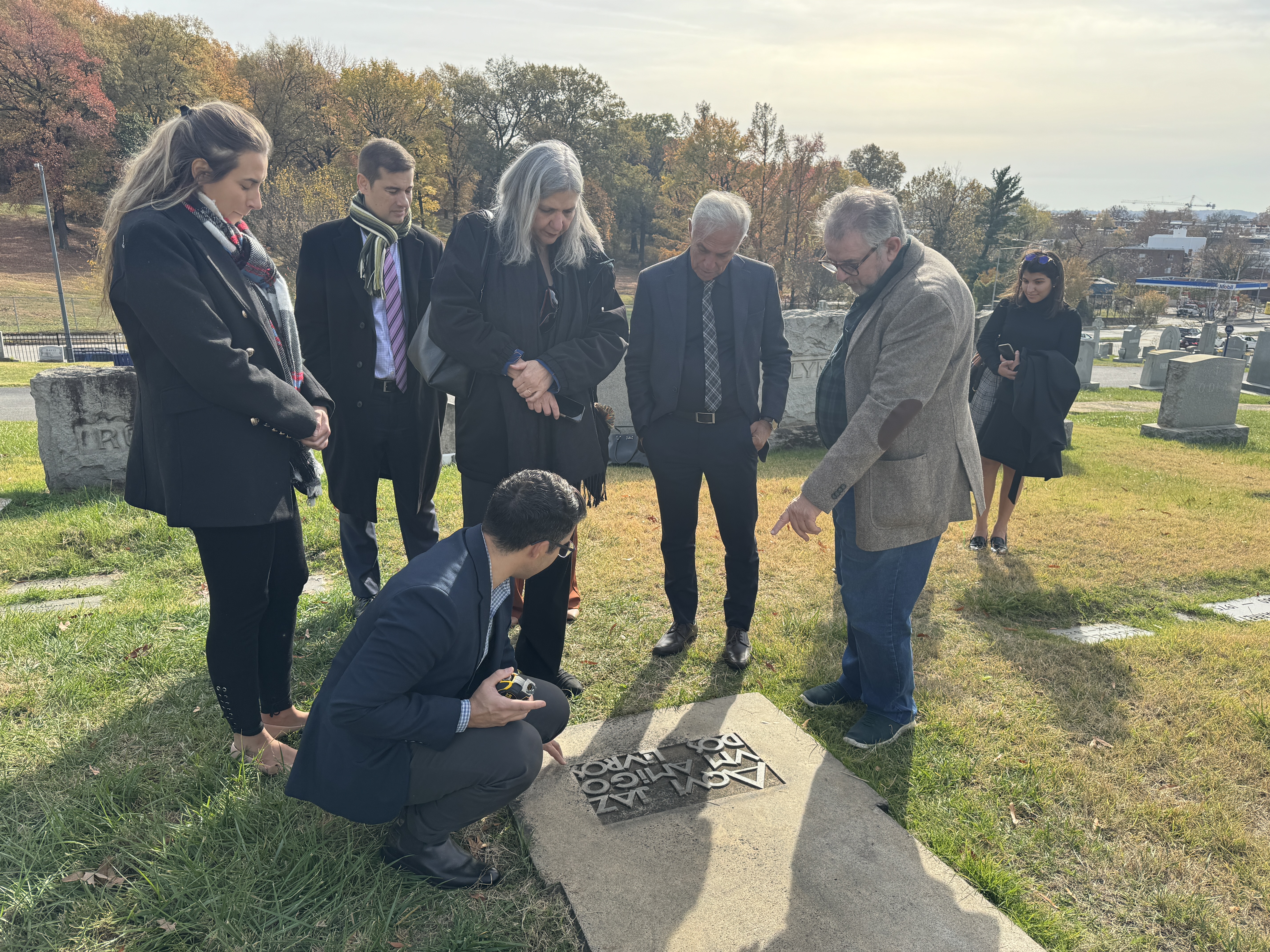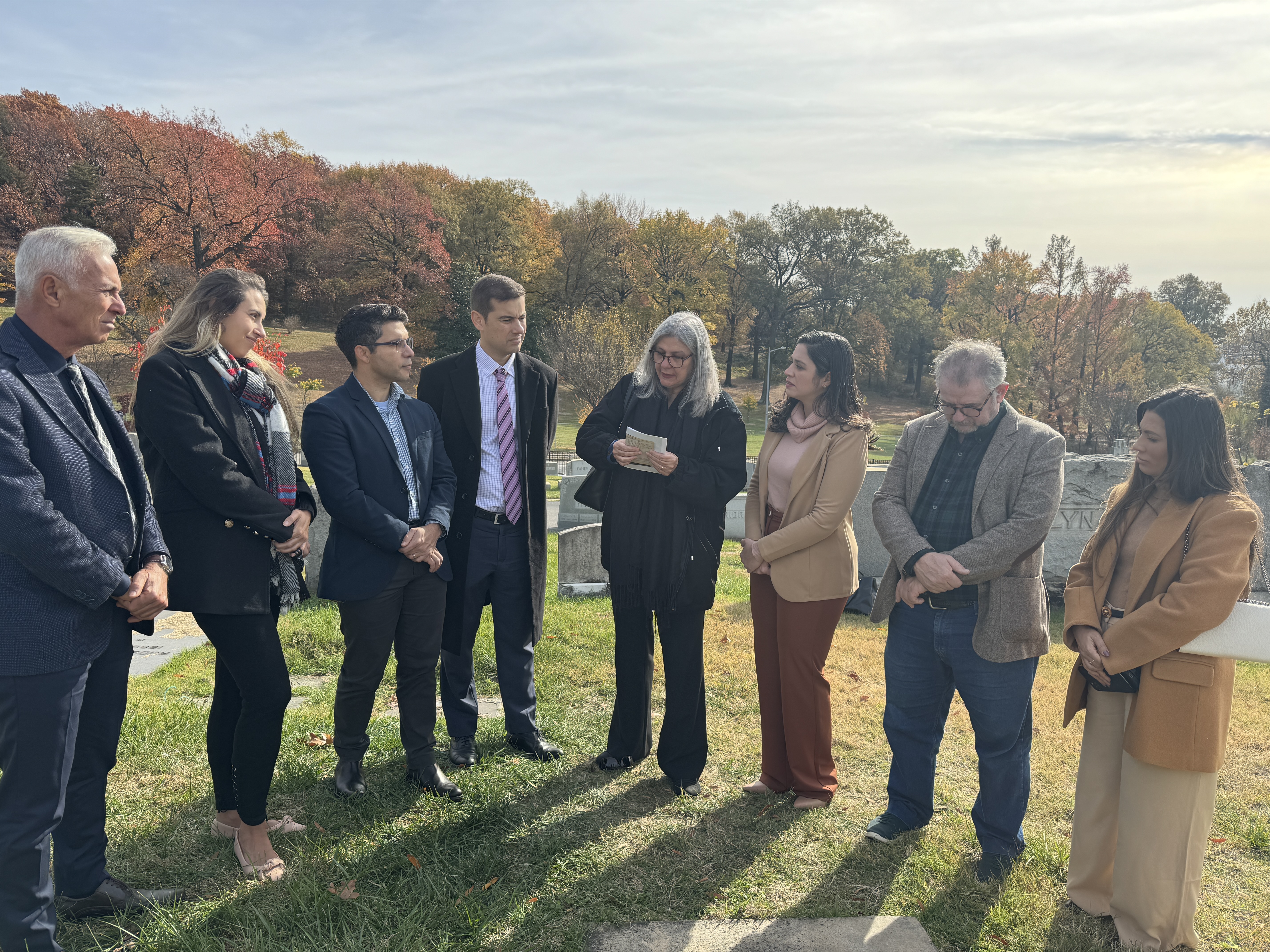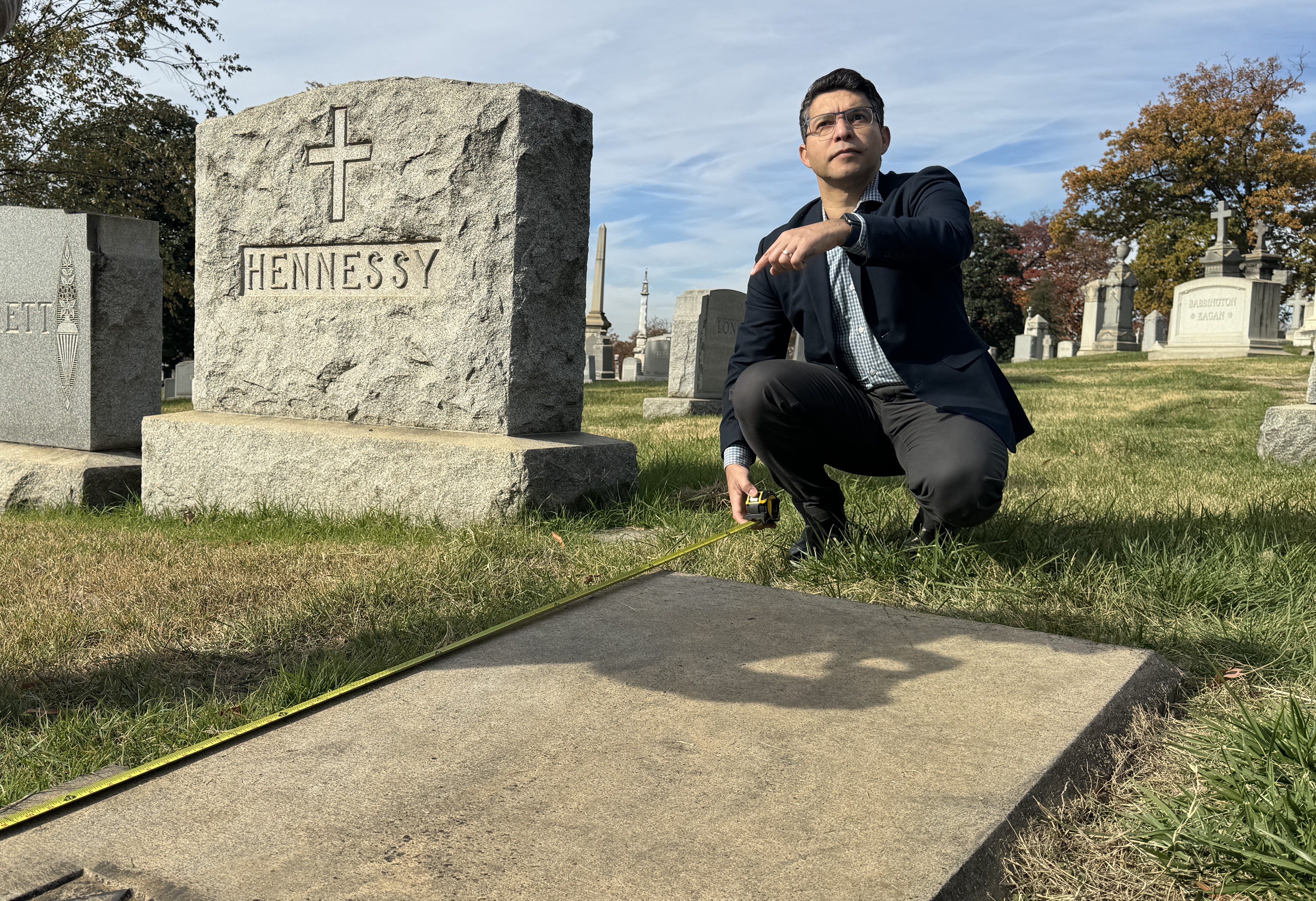
Architecture is an integral part of our daily lives, functioning in spaces that are designed for specific purposes. As we evolve, we find new spaces to suit our growing needs, and we design them accordingly. Even after we have passed away, the spaces we occupy are designed and fabricated to fit our needs and to honor our lives.
On Wednesday, November 15th, measuring and scaling began for the tombstone of Flora de Oliveira Lima, the wife of Manoel de Oliveira Lima and prominent supporter of Catholic University. Catholic University staff met with congressional members of the Brazilian delegation at Mount Olivet Catholic Cemetery in Northeast Washington, D.C. where Flora and Manoel are buried.
Flora was born in Pernambuco, Brazil during 1863 into the aristocratic Cavalcanti de Albuquerque family. Her parents were owners of a sugar plantation, their family name giving Flora a socialite status. At the age of twenty-eight, Flora married Manoel de Oliveira Lima; their marriage gave Manoel the social status to become a notable diplomat with posts in London, Stockholm and Washington DC to name a few. Flora acted as Manoel’s secretary, forming and maintaining connections with many renowned literary figures of the time period. Overtime, Manoel began and grew his library of texts that focus mainly on the culture and history of Portugal and Brazil, featuring many original sources that discuss Portuguese philosophy and etymology. The couple worked together to build this collection of over 40,000 books, with Flora acting as her husband’s archivist and organizer. Then, in 1916, a decision was made to have the library donated.
Mullen Library was established and began construction in the early 1920’s on the Catholic University’s campus. The Oliveira Lima library opened officially in 1923 as an independent collection within Mullen; this was after an agreement was made to ensure the independence of the facility with Manoel as the acting librarian of the collection. Flora took over as the library’s director after Manoel’s death in 1928, and in this role she grew the library to 58,000 volumes. Today, the library consists of roughly 60,000 printed works, ranging from books to pamphlets to maps, and about 700 manuscripts. Included in the library is the Oliveira Lima Family Papers that contain letters corresponding to the top Portuguese and Brazilian writers of the late 19th and early 20th centuries. Additionally, sixty volumes of journals written by Manoel, and a collection of artworks and photographs that were collected by Flora.
Aside from directing the library, Flora kept close ties with her diplomatic roots. In 1930, Flora was named a member and Brazilian Commissioner of the Inter-American Commission of Women, an organization intended to address the social and political needs and rights for women internationally, which nowadays is a permanent part of the Organization of American States (OAS). She was recommended for this role by the Peruvian Minister Víctor Maúrtua. After her husband’s death, Flora worked with Gilberto Freyre, the couple’s mentee, to edit and reorganize Manoel’s memoirs. She passed away in 1940, and was laid to rest beside her husband without a proper headstone.

Members of the Brazilian delegation flew in to meet with Catholic University staff members to discuss next steps in the fabrication of Flora's grave.
(From left to right: Mayor Paulo Roberto Leite de Arruda, Livia Lopes, Lorenzo De Almeida, Counselor Iberê Uchôa de Azevedo Barbosa, Duília F. de Mello, Congresswoman Iza Paula de Deus e Mello Albuquerque Arruda, Professor Marcos Galindo Lima, and Mrs. Cláudia Vicente da Silva; Not pictured: Mrs. Maria Cristina Morais)
In the beginning of 2023, the initiative to craft a tombstone for Flora was developed. Vice Provost for Global Strategies, Duilia F. de Mello, was joined by the current Director of the Oliveira Lima Library, Livia Lopes, to see the initiative through. De Mello and Lopes sought the construction expertise of Lorenzo DeAlmeida, the School of Architecture's Associate Dean of Administration and Finance, and Mark Ferguson, Dean of the School of Architecture, for this project.
This meeting consisted of a site survey and a foundational discussion of the construction amongst all who were present. Lorenzo DeAlmeida was present to conduct measurements that were precise and would mimic those of Manoel’s tombstone, as Flora will have a matching grave. Lorenzo is expected to return to the site to meet with the cemetery’s manager and finalize the schematics and confirm the initial measurements.
The tombstone will be crafted in Brazil, and will replicate Manoel’s in not only design but also in material; a pink colored granite will be used explicitly in crafting it. Flora’s tombstone is being manufactured in the city of Recife, found in the northeast region of Brazil. The Brazilian delegation has offered to cover the cost of the fabrication, and the goal is to have the tombstone completed and delivered to Washington D.C. within the next year.
The simple process of scaling a grave site is often overlooked as a form of architecture, however it is important for the preservation of our legacies. Grave sites and shrines are sacred parts of different cultures and religions. Tomb architecture is engraved in our history so that our history will remain engraved on the tombs designed for us when we pass. A marked grave is a beautiful tribute to those who have been important parts of the university’s history.

Lorenzo DeAlmeida led in ensuring that the measurements were exact to Manoel's tombstone
